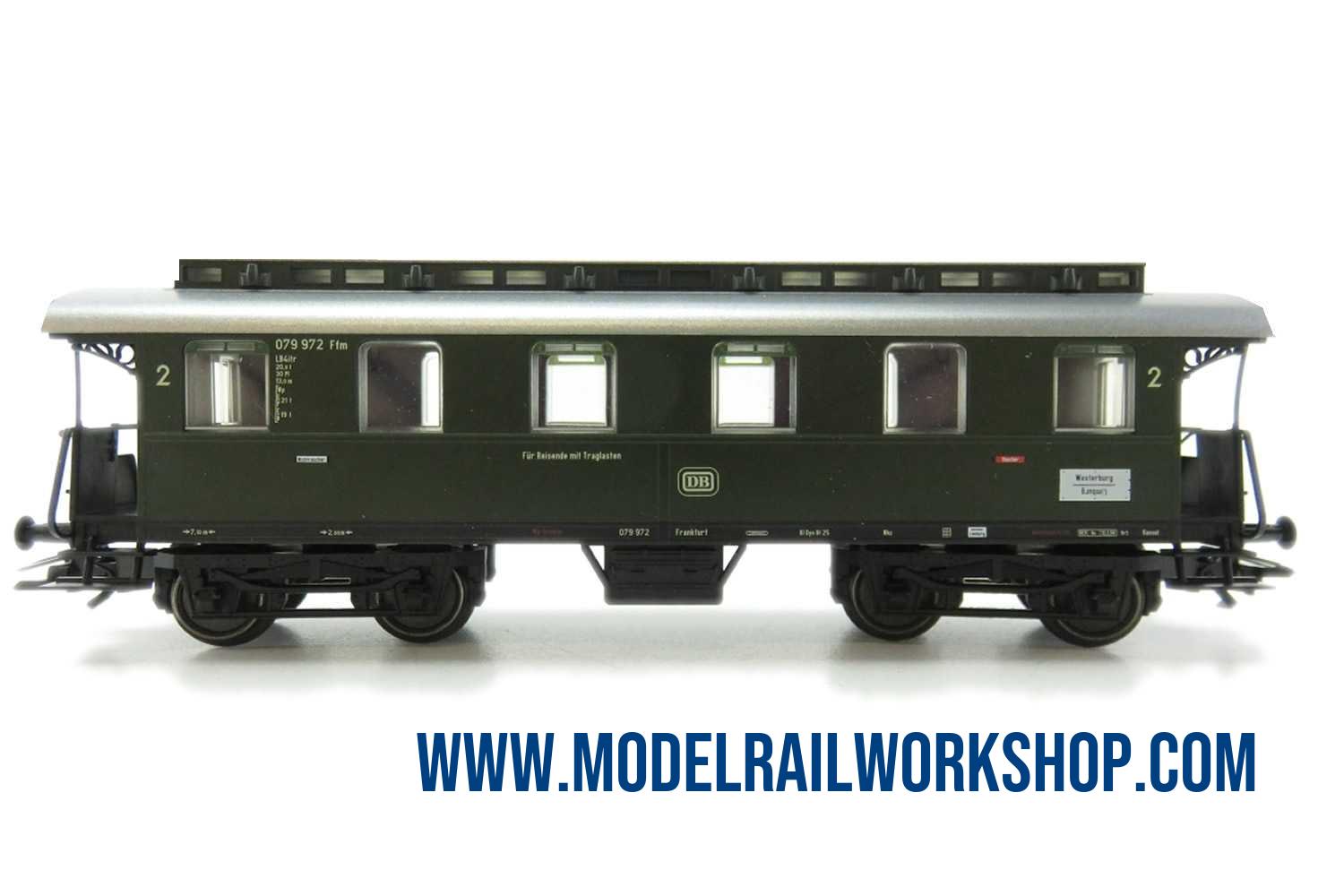
| KEY DATA | |
|---|---|
| Product Name | 43060 Passenger car - Langenschwalb - 2nd cl |
| Object type | Car-Passenger |
| Product Line | Märklin |
| Era | 1945-1970 (III) |
| Manufactured years | 2005-2010 |
| Text on object | DB - Raucher/Nichtraucher - Für Reisende mit Traglasten |
| Number on object | 079972 |
| Classification | LB4itr |
| Type of housing | Synthetic |
| Length | 14.9 cm |
| Technology | |
| Railway company | DE-DB |
| Märklin RRP (Year) | 40€ (2009) |
| Koll valuation (Year) | 20€ (2022) |
| Url to Märklin | Klick to GoTo www.maerklin.de |
| Description | |
|---|---|